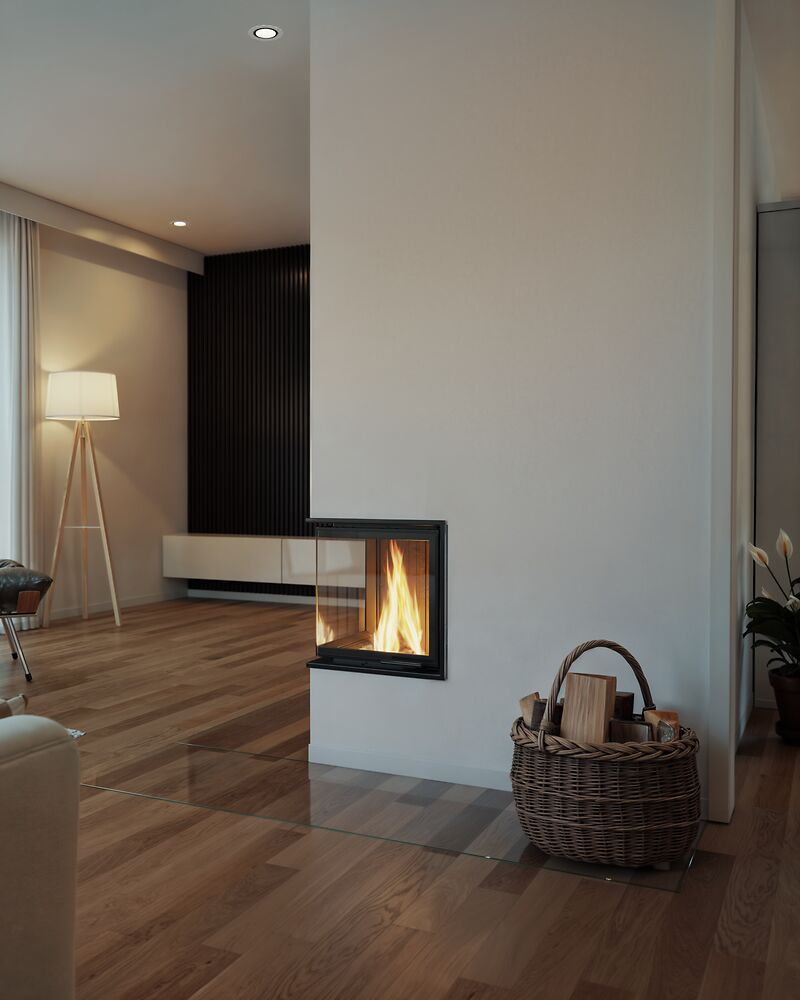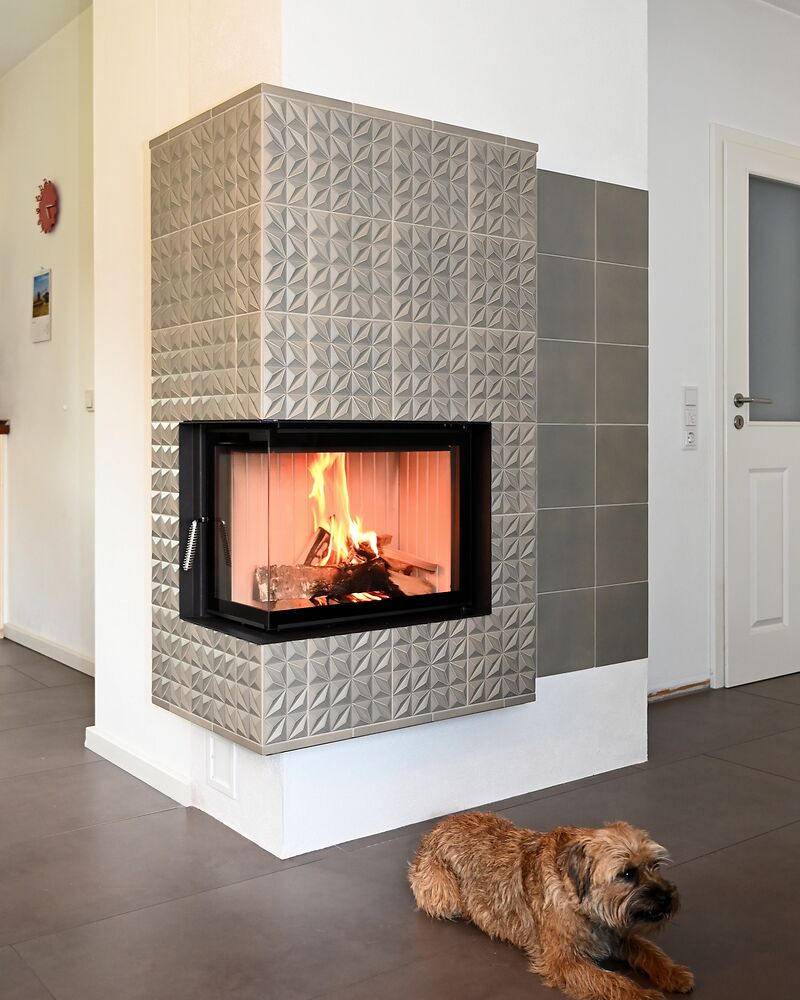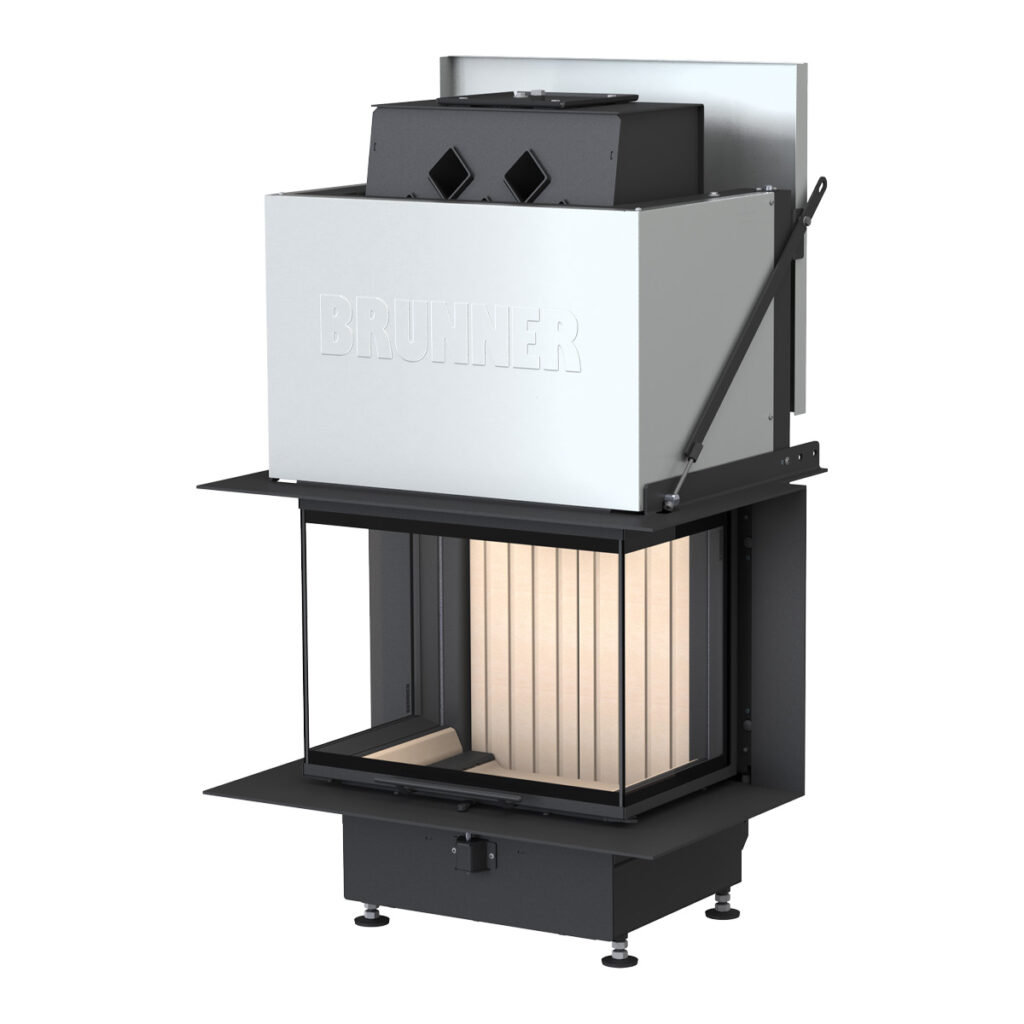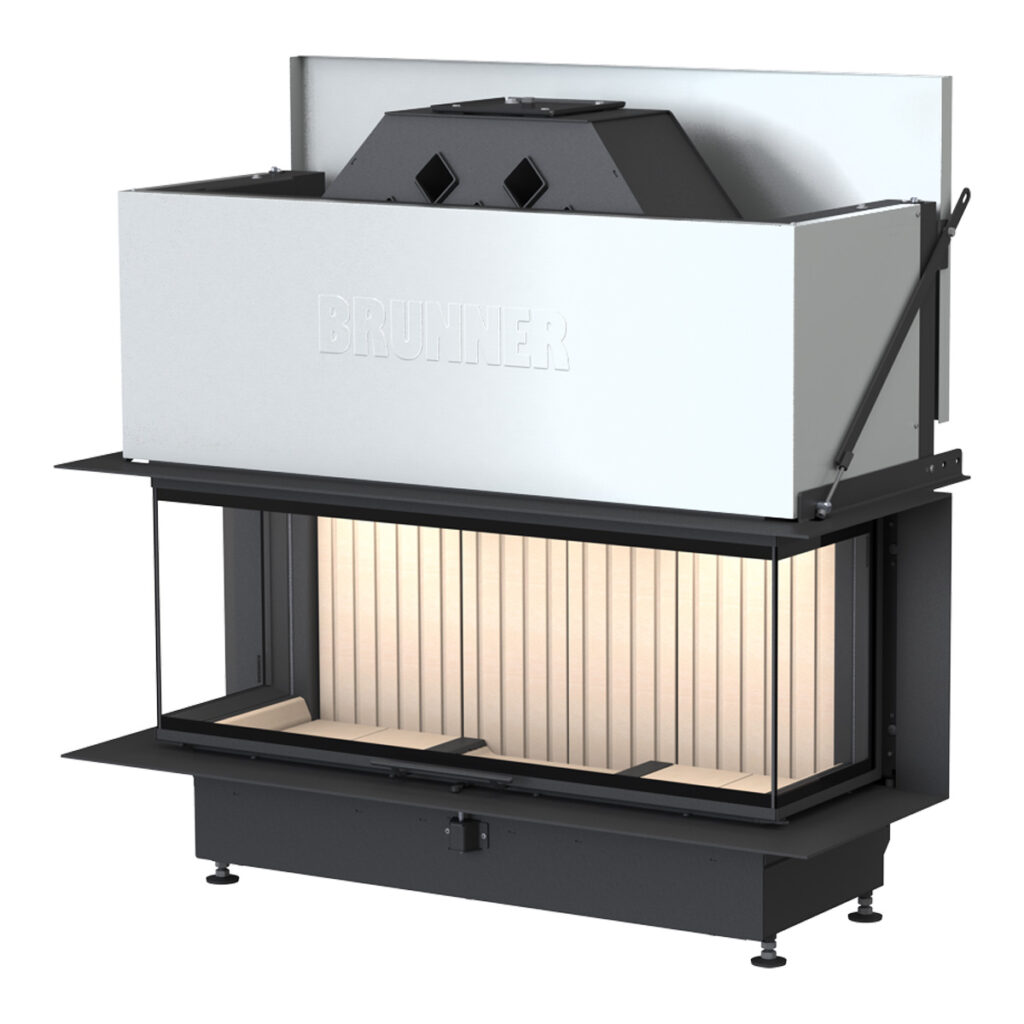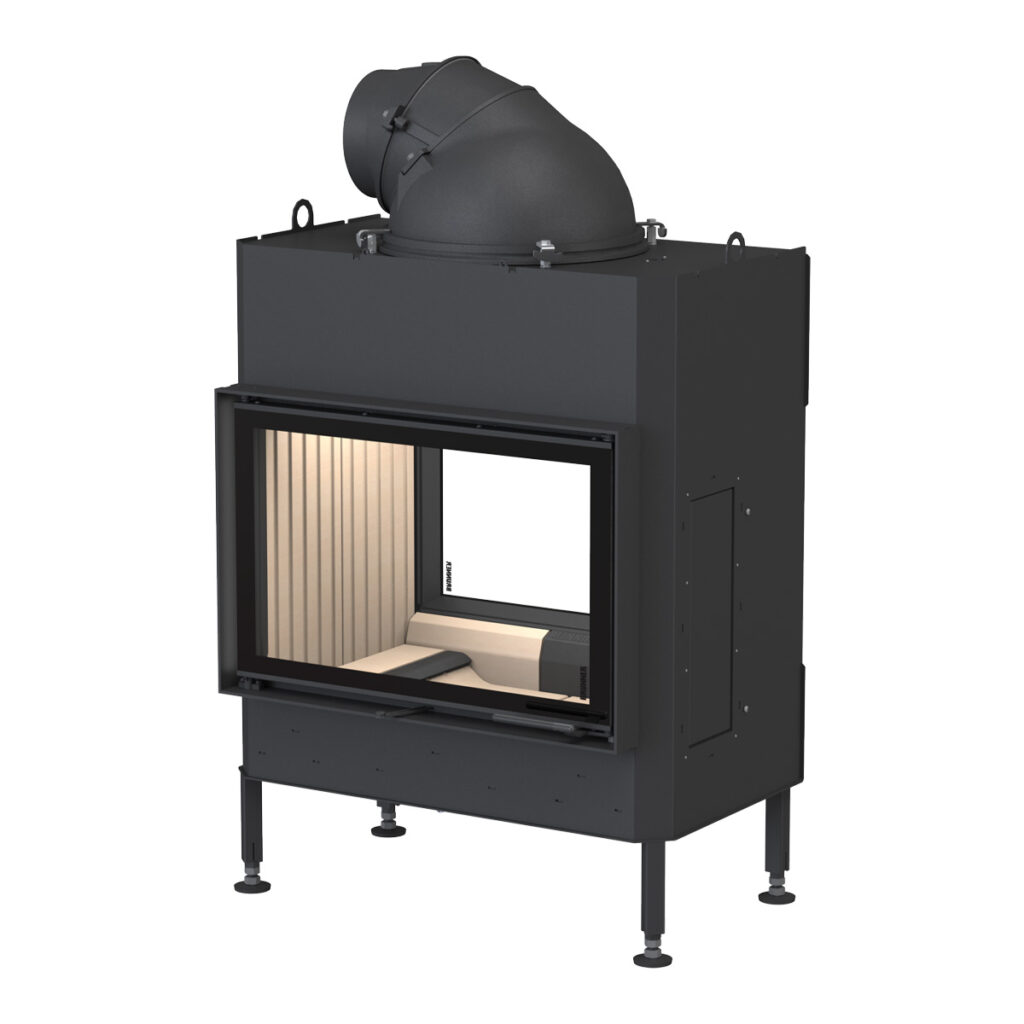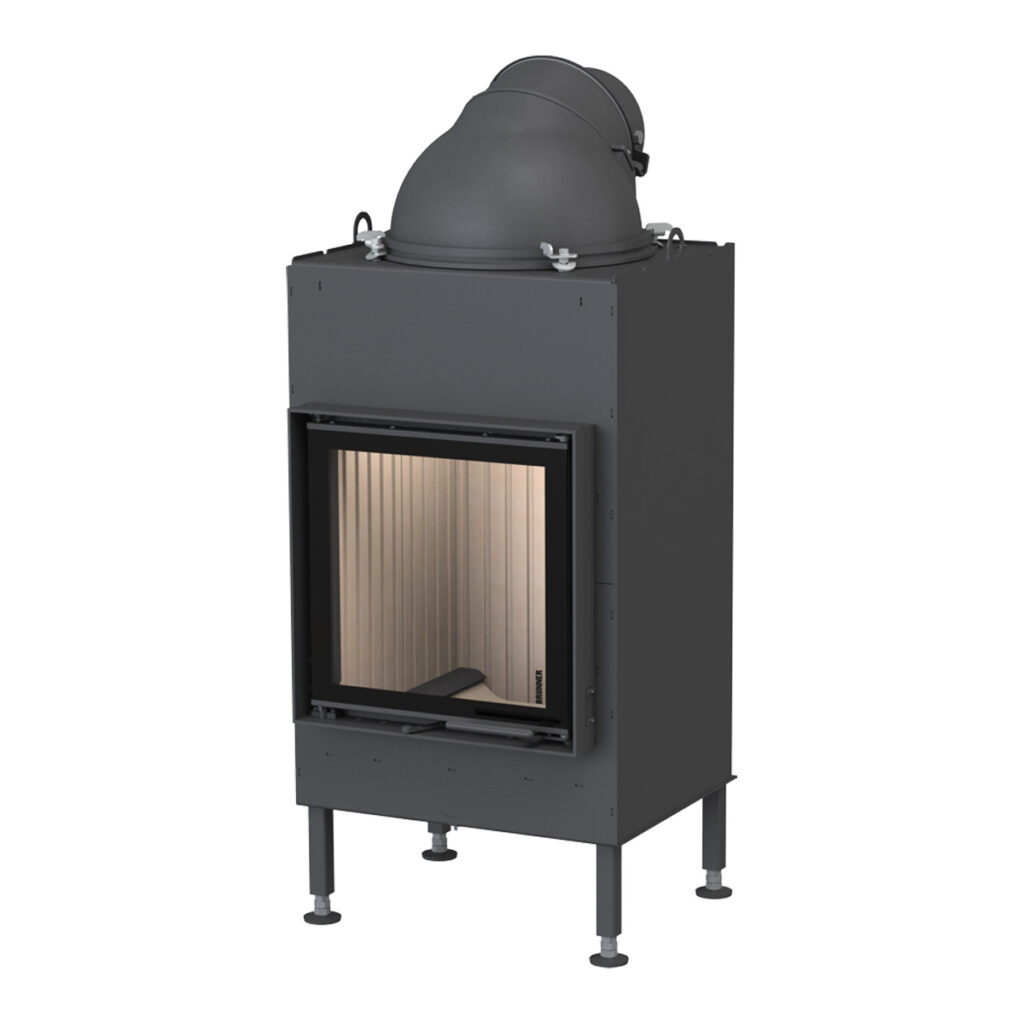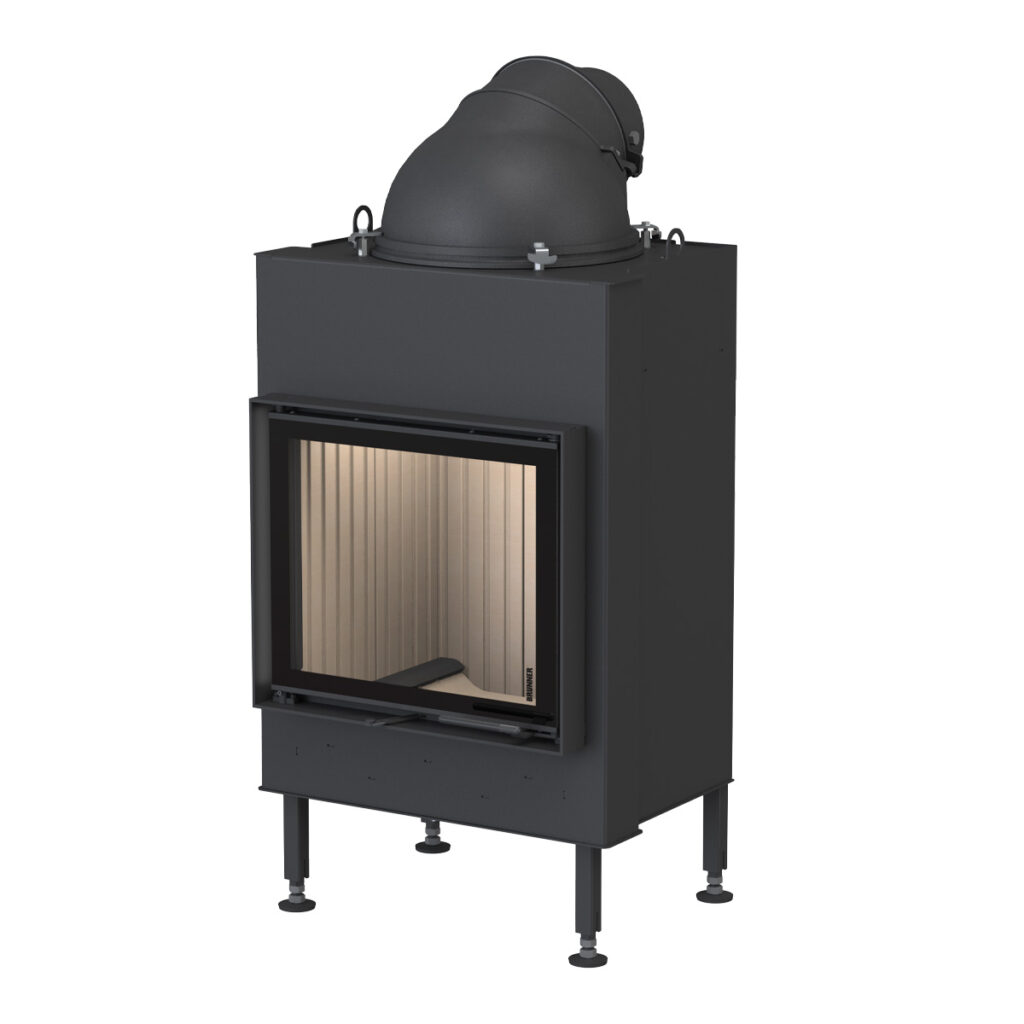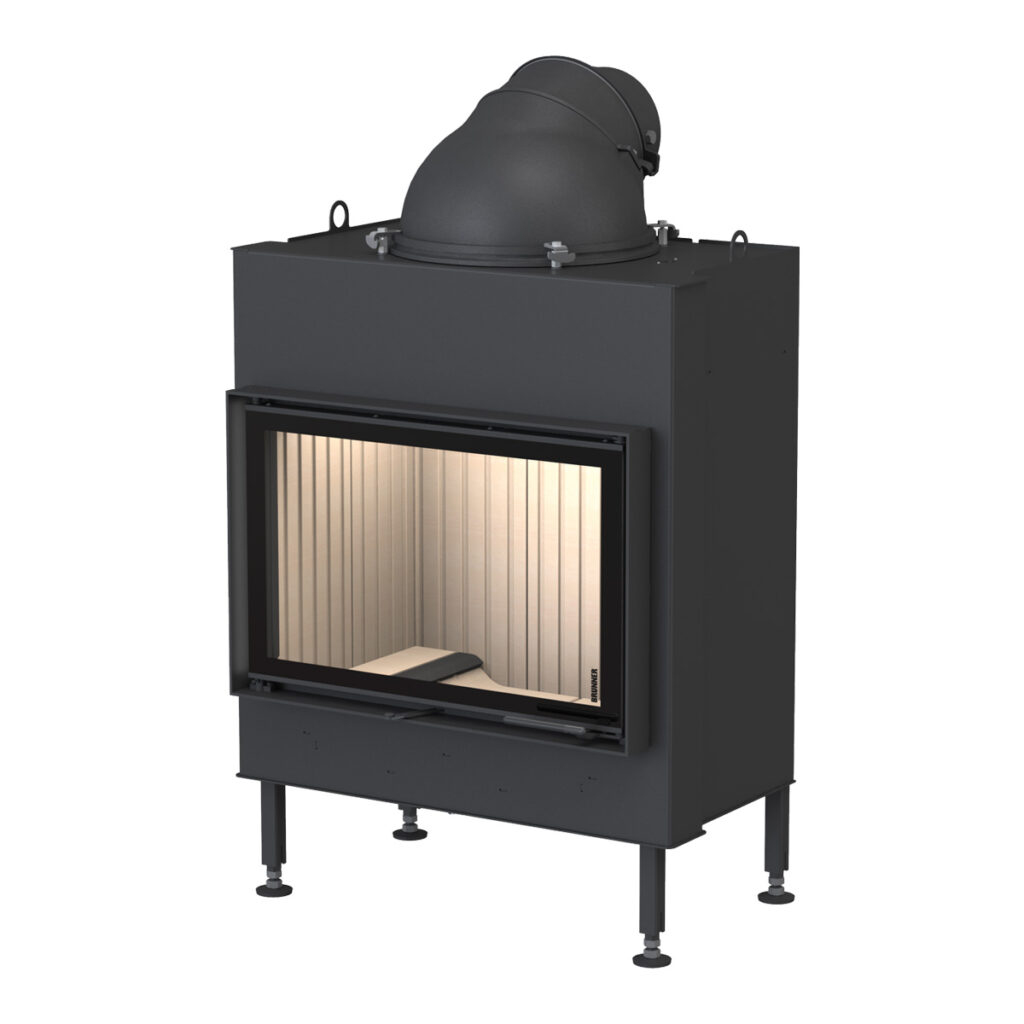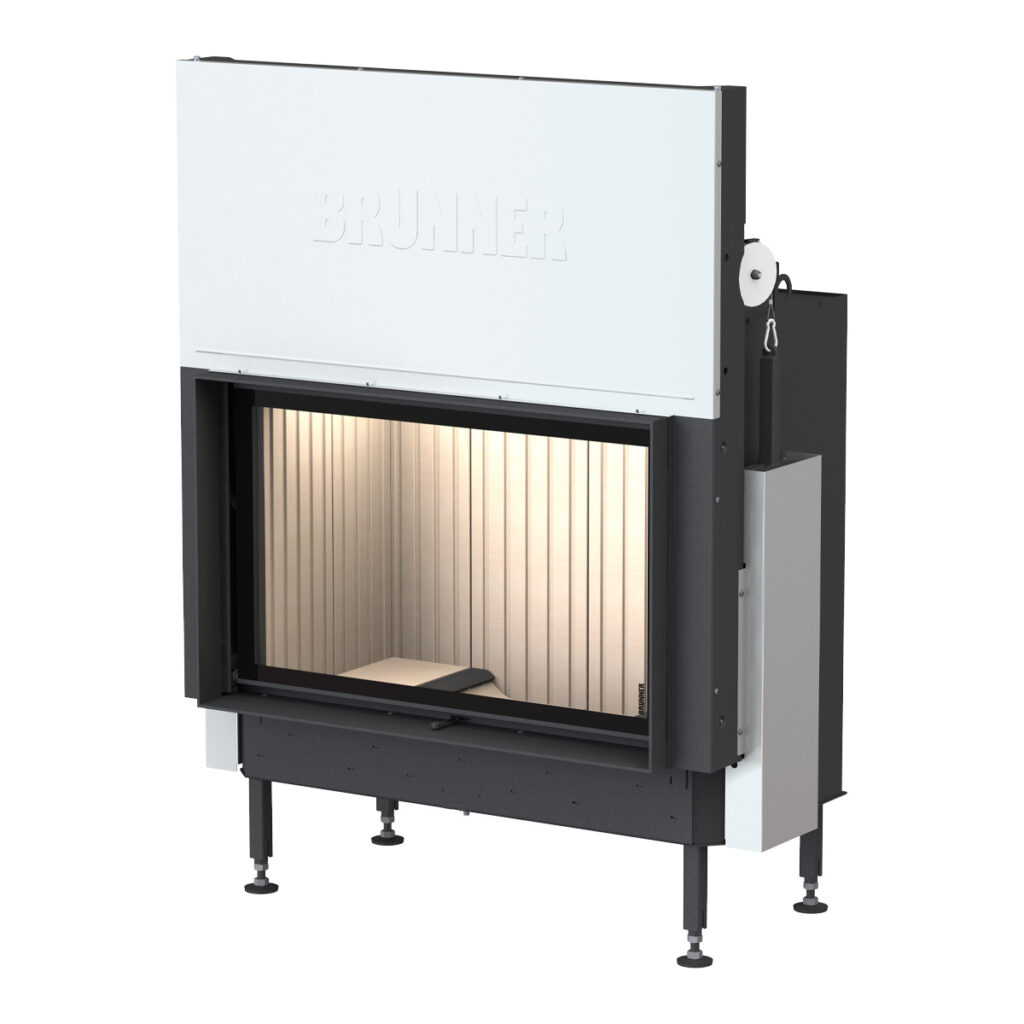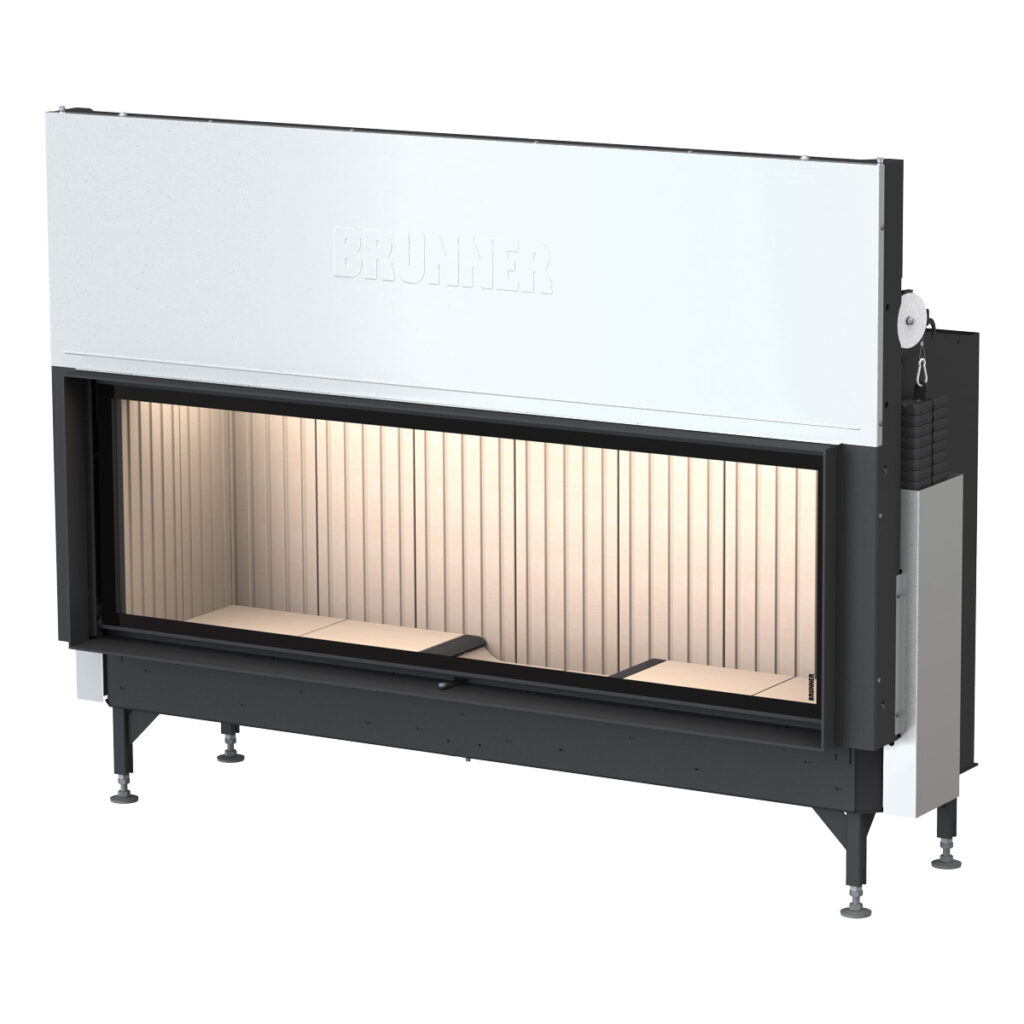The perfect fire – with an outstanding variety of glass pane formats
Thinking about buying a fireplace? On cold, dark winter days, nothing creates more comfort than a stove – and nothing has more emotion than its crackling fire. So go for it. Watching the flames is soothing, and the warmth feels good all year round. Large glass formats are especially popular, while heating output tends to play a secondary role.
A fireplace is a wood-burning unit made of steel that provides quick heat. It also offers generous glass panes and plenty of freedom in room design.
The features
- 1. Fireplace atmosphere
Whether from one, two, or three sides: with the expansive glass formats, you’ll enjoy a fantastic view of the flames.
- 2. High warm air output
The room air entering through the lower openings of the fireplace casing is heated by the hot surfaces and released back into the room as warm air.
- 3. Quick-response stove
As soon as you light the fire, the warmth can already be felt. Thanks to the large glass ceramic pane, the fireplace quickly releases heat into the room—but it also loses it just as quickly if you don’t add more wood in time.
- 4. Cleaning closure “click-clack” for lifting doors
Opening the glass pane at the push of a button is especially convenient, giving you easy access whenever cleaning is needed.
- 5. Easy-lift mechanism
Since large glass panes can often feel heavy when opening or closing, we developed a user-friendly mechanism that makes the process smooth and effortless. It is highly durable and protects the sealing surface.
- 6. The handle
Wherever possible, we’ve eliminated obtrusive handles. That’s why we created this solution for design enthusiasts.
- 7. Manually operated or automated
With just a single control lever, the combustion air can be adjusted manually—simple and intuitive. Symbols on the glass pane make operation even easier.
Of course, it can also run fully automated, as shown by the white EAS display. The most convenient option is the combination with an electronic combustion control system (EAS). All you need to do is light the fire or add wood—the system takes care of everything else. The result is perfect efficiency, since the EAS servomotor never forgets to readjust and always stops the air supply once the burn is complete. This is especially practical if you can’t tend the stove after lighting it—for example, when going to bed or leaving the house.
- 8. The patented bowl firing system
Unique in the industry and designed without a grate or ash box, it ensures the lowest emission levels. Logs burn especially cleanly and efficiently, supported by precise air guidance. Both primary and secondary air can be directed with precision and controlled using just a single operating element.
- 9. Retrofit-ready catalytic converter
The catalytic converter can be inserted and cleaned via the combustion chamber. After leaving the combustion chamber, the heating gases pass through a ceramic honeycomb with a catalytic coating. This reduces CO emissions by up to 80% and hydrocarbons by more than 50% (according to a study by the German Biomass Research Center).
- 10. Fire-viewing glass panes made of glass ceramic
They are specially designed to withstand the high and fluctuating temperatures of the combustion chamber as well as the mechanical stresses of a fireplace. Options include transparent glass ceramic, heat-reflective coatings, and double-glass versions.
- 11. Custom combustion chamber lining
Here you can choose between dark cast iron or light Schamotte.
- 12. Door and frame options
You can choose between two high-quality, durable, and technically refined options: lifting door or side-opening door. Both systems are available with two frame solutions – either the visible door frame mounted on the surface, or the discreet mounting frame integrated into the cladding.
The future of
eco-friendly heating
Our brand-new BKH green fireplace inserts set new standards with the latest technology. At the heart of it all is the innovative, energy-efficient, and industry-unique bowl firing system. Combined with BRUNNER’s signature clean, high-quality design and the option of a retrofit catalytic converter, it delivers a perfect flame picture with the lowest possible emissions.
BRUNNER “green-line” represents a new generation of outstanding, climate-friendly fireplace inserts – something you’ve been searching for in vain on the market until now.
We’ve made sure to perfectly combine environmental responsibility with user experience. The result is a system that’s a real pleasure to use: this revolutionary fireplace allows you to heat in an exceptionally eco-friendly way. Every BRUNNER fireplace of the new generation is already “green” – meaning current emission limits are not just met but far undercut, while improved efficiency means significantly less wood is needed.
“Actually, we reinvented everything – except the fire. That was already there.”
The four
Glass pane formats

Panorama fireplace: view of the fire from three sides
BRUNNER’s panorama models are special fireplaces with three-sided glazing that offer an exceptionally generous view of the fire.
The wide glass surfaces provide a perfect all-round view and a unique fire experience from different angles within the room. Some of our panorama fireplaces can even be installed as floating units with a support frame system.

Corner fireplace: view of the fire from two sides
What can you look forward to with a corner fireplace insert? A true eye-catcher, cozy warmth, and space-saving installation. It’s ideal as a room divider or as a decorative feature in an open living space. The body, or rather its wall-facing sides, form a right angle allowing it to be built directly into the corner of a room and turning unused spaces into something special.
Another advantage: with the diagonal placement in the corner, you can enjoy an unobstructed view of the fire from anywhere in the room. And a corner fireplace blends seamlessly with any interior style. The only requirement is that the chimney connection must also be located in the corresponding corner.
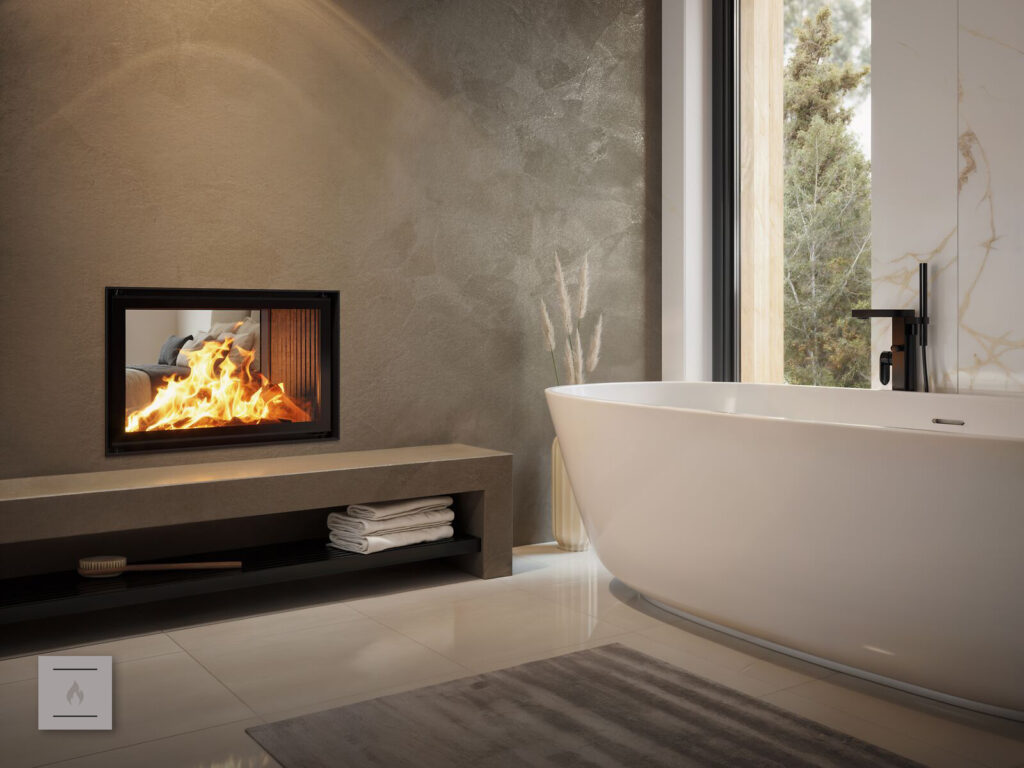
Tunnel fireplace: view of the fire from two sides of the room
Why are BRUNNER tunnel fireplaces so popular? Simple: they don’t just heat the room, they also create a natural divider without feeling too massive. With glass panes on both sides, you can enjoy the fire from two rooms at once.
BRUNNER tunnel fireplaces are the perfect solution for anyone who wants their wood fire to know no boundaries.
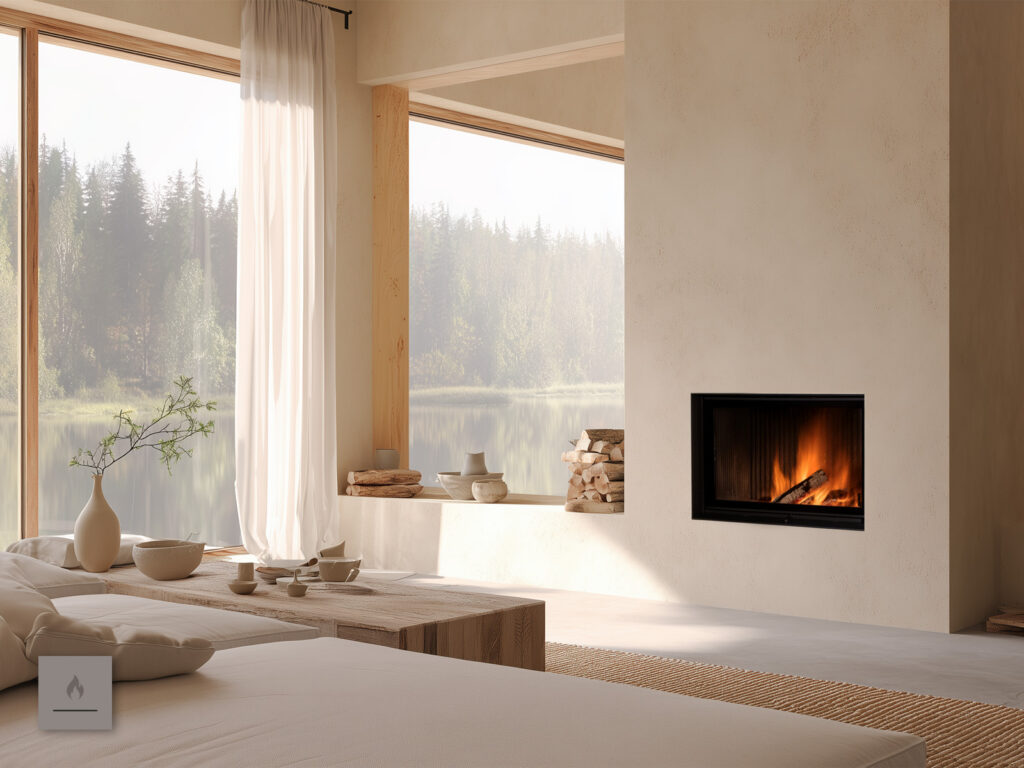
Flat fireplace: frontal view of the fire
Flat fireplaces are the most common format among the different types of fireplaces. They can be integrated into almost any project with relative ease. Framed with the right fireplace cladding, they look like works of art – often rivaling the television.
From compact models to expansive architectural designs, BRUNNER offers everything your heart desires.
Primarily for fire atmosphere with warmth
A classic fireplace is a heating appliance that delivers quick warmth and plenty of visible fire. It consists of a combustion chamber, a smoke collector, and a connection to the chimney. The large glass panes radiate heat directly into the room, with warmth transported primarily through the air. Fireplaces are mainly wood-burning, though gas models are also available.
Today, fireplaces rank among the most popular types of wood-burning systems, with designs available in countless variations. Unlike in the past, the fire no longer burns in an open hearth but in a fireplace insert. There are two main reasons for this: efficiency is much higher, and emissions are significantly lower. The shift from open fireplaces to closed combustion chambers with controllable combustion became possible thanks to the invention of the glass ceramic pane. Fireplace construction typically involves steel, special fireplace glass, and, in high-quality combustion chambers, genuine Schamotte stone. The open side of the combustion chamber is the firebox opening, used for loading wood and removing ash.
There are many manufacturers and brands offering fireplace inserts, but the inserts from Bavarian specialist BRUNNER are made of steel. They are available in a wide range of glass formats with either side-opening or lifting doors, as well as optional additional heat storage elements. The choice of format and design usually depends on individual needs and the specific living situation.

How a fireplace works
The fireplace as a quick-response stove: fast to heat up, but just as quick to cool down
A fireplace or stove with a metal heat exchanger is known as a quick-response stove. This means that after the first burn, wood needs to be added roughly every three hours to maintain steady heat output – which can consume quite a bit of firewood. As a quick-response stove, a fireplace delivers warmth rapidly, since there are no storage elements that need to heat up over time. This is especially appreciated by people who want fast, comfortable warmth for just a few hours in the evening after work.
The fireplace as a slow-response stove with storage modules
Fireplaces can also be equipped with storage modules to meet specific heating requirements. In this case, ceramic storage mass is placed next to or on top of the unit. In the first version, the still-hot flue gases from the combustion chamber are concentrated into a hot core stream via the compact cast-iron dome. This creates the ideal conditions to heat a storage mass, similar to a tiled stove, which then releases the stored heat into the room long after the fire has burned out. This solution is perfect when a larger fireplace installation is intended to function as a radiant stove.
If the storage mass is placed on top of the storage fireplace, the principle works in much the same way. In this way, a high efficiency and a radiant stove effect can be achieved within a very compact footprint.
The fireplace as a water-bearing version
A water-bearing design with a boiler attachment is also possible. In this case, the still-hot flue gases from the combustion chamber flow through a boiler body positioned directly above it. This way, in addition to the fireplace effect, the central heating system of the house can also be supported.
This is how the glass stays clean
Design, chimney draft, wood moisture, wood quantity, and operation are the key factors that keep the glass pane clean.
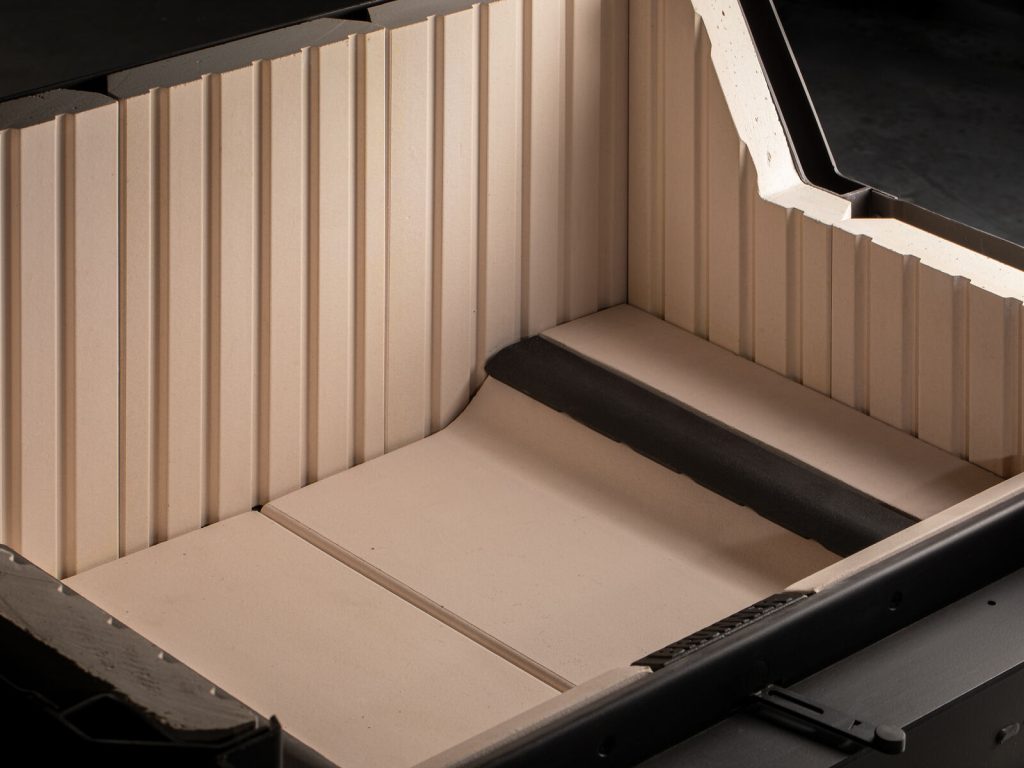
The construction
At BRUNNER, the combustion air system is designed so that the incoming air flows along the glass pane, reducing the buildup of soot and dust particles. The door profile and glass guide ensure that this protective airflow is not disturbed by leaks.
As a result, no soot streaks form on the glass. Thanks to their geometry, small, flat glass formats stay clean the longest. Two- or three-sided glass constructions (corner or panorama fireplaces), where turbulent airflows occur in the corners, need to be cleaned more often.
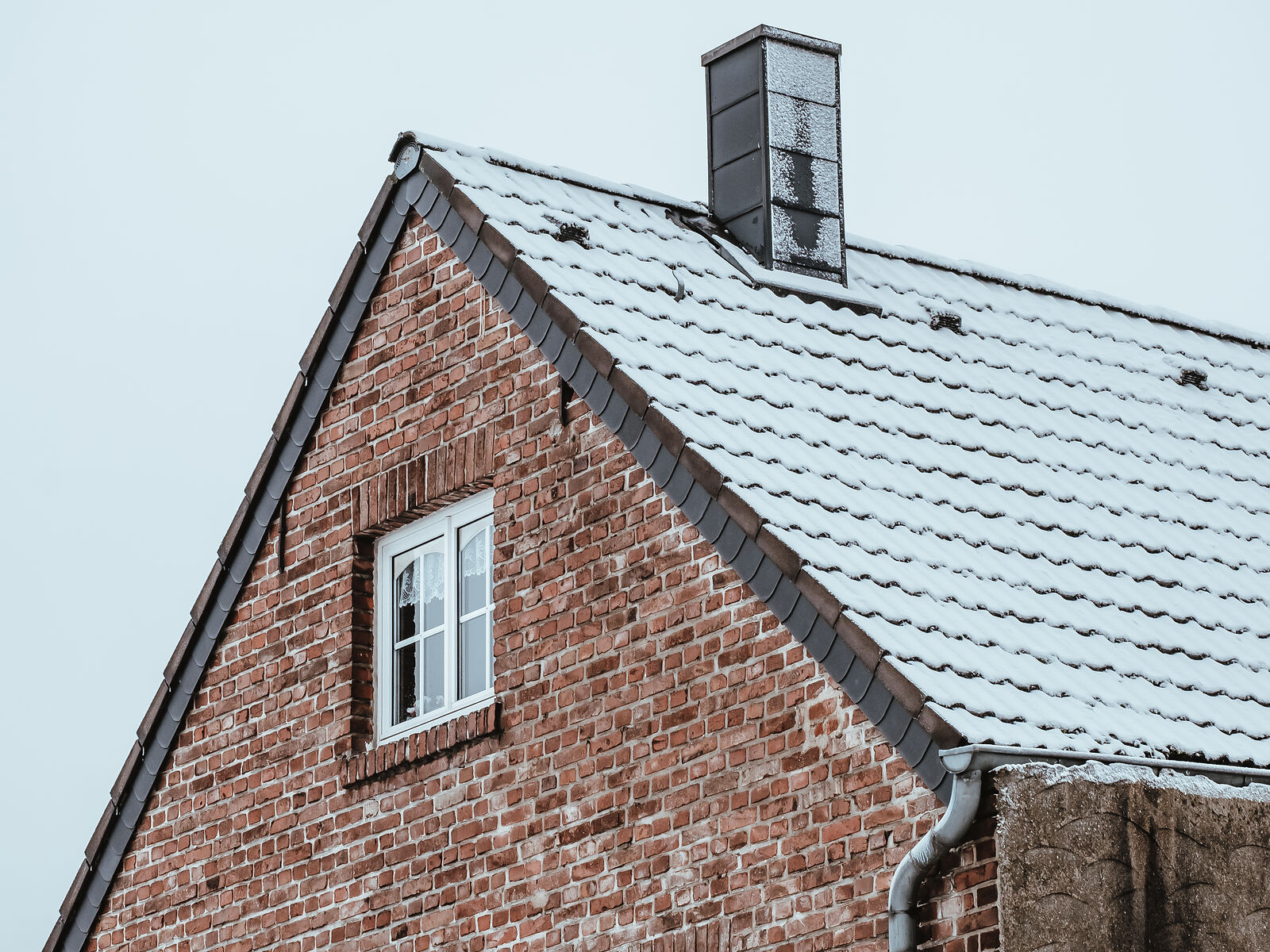
The chimney draft
Excessive or insufficient chimney draft cannot be balanced out by the adjustable combustion air openings. Under these conditions, airflow patterns develop that lead to increased soot deposits.
BRUNNER has optimized this technically with solutions such as the Sissi flap. Operation under poor weather conditions can never be completely avoided and must be accepted as an exception.
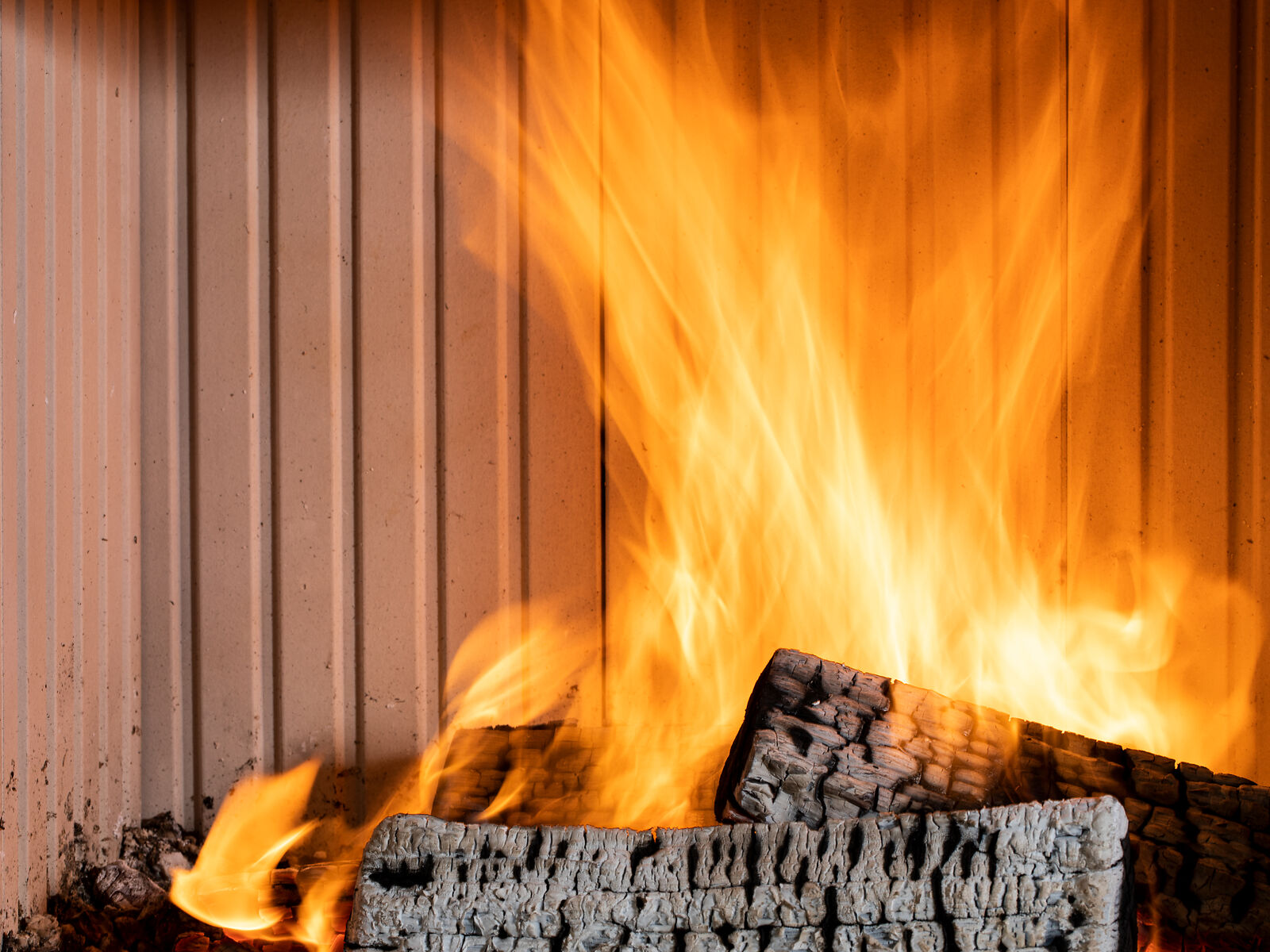
Wood moisture, wood quantity and operation
Fuel quality and quantity have a significant impact on keeping the glass pane clean. Only with dry firewood (residual moisture < 20%) and the specified filling amounts for the respective combustion chamber can the required temperatures and airflow conditions for glass flushing be achieved under proper operation. If combustion chamber temperatures are too low, the heating gases will condense on the cold glass surfaces despite the flushing air. The glass will fog up and become sooty.
Depending on usage intensity and the conditions of each firing cycle, cleaning of the glass may be necessary after 2–10 burns. Regular cleaning of the glass ceramic is essential.
Glass pane format
More filters
FAQ Fireplaces
- Why choose a fireplace instead of a wood stove?
A stove mainly differs in the way it is built. Sold as a finished product, often cheaply available in DIY stores and online shops, it is simply purchased and connected like a consumer good. The heating system cannot be individually adapted to the customer’s living situation or space; individuality comes only from choosing among available models. The motto: set it up, plug it in, light it. Practical – but anything but flexible.
A fireplace, on the other hand, is a custom heating system, designed by an experienced, well-trained craftsman and tailored specifically to your needs. You are not buying a standard product “off the shelf,” but a unique piece of (heat) architecture for your home.
- Is a fireplace right for me?
The variety of wood-burning systems reflects the many different lifestyles and living situations. Not every wood-burner is the same, which is why it’s important to choose a solution that truly fits you. A fireplace is first and foremost about visual appeal. Large glass panes, sometimes used as room dividers or corner designs, offer maximum views of the mesmerizing flames. As a quick-response stove, a fireplace also provides fast heat without the need to warm up storage elements over time. This makes a fireplace especially suitable for those who value the atmosphere of fire, not just the warmth but also the visual experience. It is also ideal for people who spend less time at home, since it delivers quick, comfortable heat for just a few hours in the evening.
- How does the planning of a custom-designed fireplace work?
A high-quality fireplace is not a ready-made product – it is individually planned and built for each customer. To achieve this, stove and heating system builders, often referred to as “Ofensetzer,” complete years of training and master all disciplines of fireplace construction. A premium fireplace must not only fit seamlessly into the interior design and reflect the customer’s personal taste. It also needs to be adapted to the thermal requirements of its surroundings. After all, no one wants a fireplace that overheats the room like a sauna or fails to deliver enough warmth to create comfort on the coldest winter days. Only a qualified craftsman can perfectly combine design, heat architecture, and functionality.
The advantages of individual, handcrafted fireplace construction at a glance:
- Initial consultation for the project
- Optional on-site inspection of the living space
- Tailor-made planning, often including customer-specific adjustments
- Premium construction using high-quality materials and fireplace inserts
- Precise and clean execution
- Customer service and after-sales support
- Extended warranty including service coverage of up to 5 years
- What is the difference between a fireplace and a storage heater?
As the name suggests, a traditional storage heater (such as a tiled stove or a masonry heater) is designed to store heat and release it gradually over time. This is achieved through a very heavy thermal mass, known as ceramic flues, which absorb energy from the hot combustion gases through friction. In many cases, this mass weighs more than a ton. A fireplace, on the other hand, does not have such a thermal mass. Instead, it transfers heat directly into the living space through the glass pane. This has the advantage that the warmth can be felt almost immediately after lighting – unlike a storage heater, which only begins radiating noticeable heat after one to two hours. Another difference lies in construction: since fireplaces lack heavy storage elements, their structural requirements are significantly lower compared to tiled stove or masonry heater. However, the latter offer the benefit of pleasant radiant heat, which keeps the room warm for much longer and even provides health advantages, for example for allergy sufferers.
- What is a fireplace?
A classic fireplace is a wood-burning system designed to provide quick heat and a striking view of the fire. Thanks to its large, expansive glass panes, warmth is released rapidly and directly into the living space. The heat is transferred mainly through the air, creating a type of heat exchange. Fireplaces have become one of the most popular forms of wood heating, as they suit the lifestyle of many modern households. In most cases, the construction consists of steel, specialized fireplace glass, and – in high-quality combustion chambers – genuine Schamotte.
- Fireplace: Where to place it?
Modern fireplaces are designed above all to please the eye. With their large glass panels, they offer a maximum view of the flames and often serve as stylish room dividers. Corner versions can also be real highlights. However, a fireplace should not only be beautifully placed — there are several important aspects to consider when choosing its location.
- One key factor is maintaining a safe distance from combustible materials. Wooden floors or carpets can be protected with special fireproof bases, such as slate or metal plates. To ensure full protection against stray sparks, the covering in front of the fireplace should extend at least 80 centimetres into the room and around 30 centimetres to the sides.
- A proper gap must also be kept between the fireplace and the wall behind it. The required distance depends on the model, but generally ranges between 20 and 60 centimetres.
- Between furniture and the fireplace, there should be at least 120 centimetres of space. If the glass panel has a heat-reflective coating, this distance can be reduced to a minimum of 80 centimetres.
- Depending on the model, a fireplace can be quite heavy. It is therefore essential that the floor can support the weight and meets all necessary structural and fire-safety requirements.
- The appropriate fireplace size depends not only on its location but also on the chimney’s exhaust capacity, which plays a crucial role. To ensure proper smoke extraction, it is advisable to consult a chimney sweep before purchasing. They can inspect the space, assess safety aspects and identify any potential risks.
- Room-air dependent or room-air independent?
For a fire to burn, it needs not only wood as fuel but also oxygen. A fireplace can obtain this either from the installation room or through a separate connection. This is why we distinguish between room-air dependent and room-air independent fireplaces.
With a room-air dependent appliance, the oxygen supply can be regulated using various control levers on the unit. For optimal combustion, the air supply should not be reduced too early, otherwise the wood will not burn properly. In addition, there must always be enough oxygen in the installation room, which means regular ventilation is necessary. Otherwise, there is a risk of dangerous negative pressure. When handled correctly, however, a room-air dependent fireplace is not a problem.
With a room-air independent fireplace or stove, shock ventilation is not necessary because these appliances do not use room air. Instead, they receive their air supply through a dedicated air duct or an external air connection. In new buildings, these air ducts should be included in the planning from the start. For passive and low-energy houses, they are even required by law.
- Which fireplace is right for me?
Nothing creates more atmosphere than the cozy warmth of a real fire: BRUNNER fireplaces are the ideal solution for anyone who wants not only to feel but also to experience wood fire.
Heating fireplaces are installed when the main goal is atmosphere. Their design, fuel capacity and heat output are tailored to this purpose. BRUNNER steel fireplace inserts are available in many different glass formats, with hinged doors or lift-up doors, and with optional heat recovery surfaces – for the perfect atmospheric fire with the desired heating effect.
At first glance, firebox dimensions and glass formats may look similar. Only on closer inspection, and at the latest during operation, do price- or function-optimized product designs from other manufacturers become apparent. BRUNNER focuses on function and quality – uncompromising down to the last detail. BRUNNER steel fireplace inserts are available in many different glass formats, with hinged doors or lift-up doors, and with variable heat recovery surfaces.
BRUNNER craftsmen search
If you are interested in a BRUNNER stove or heating system, please contact one of our craftsmen.





